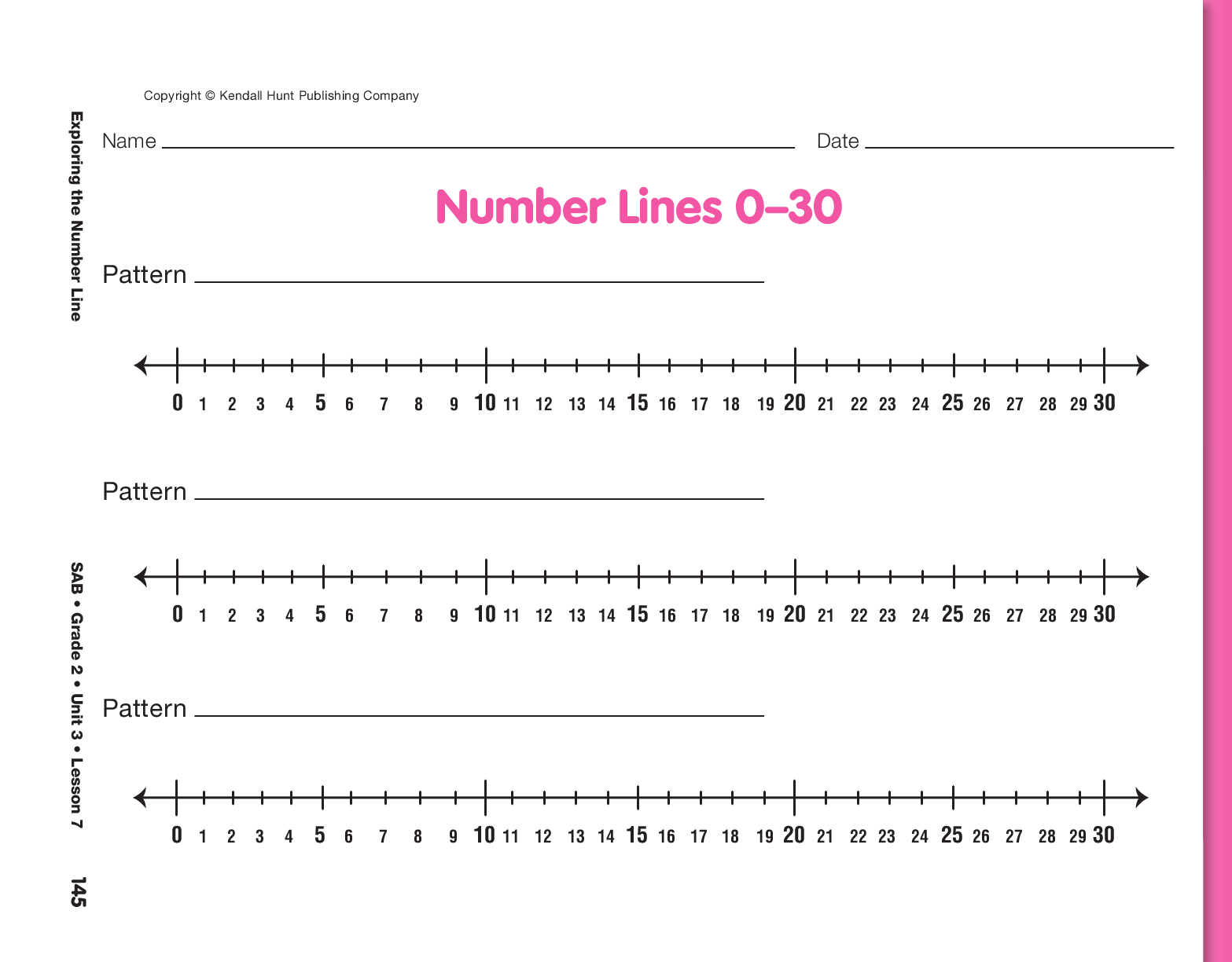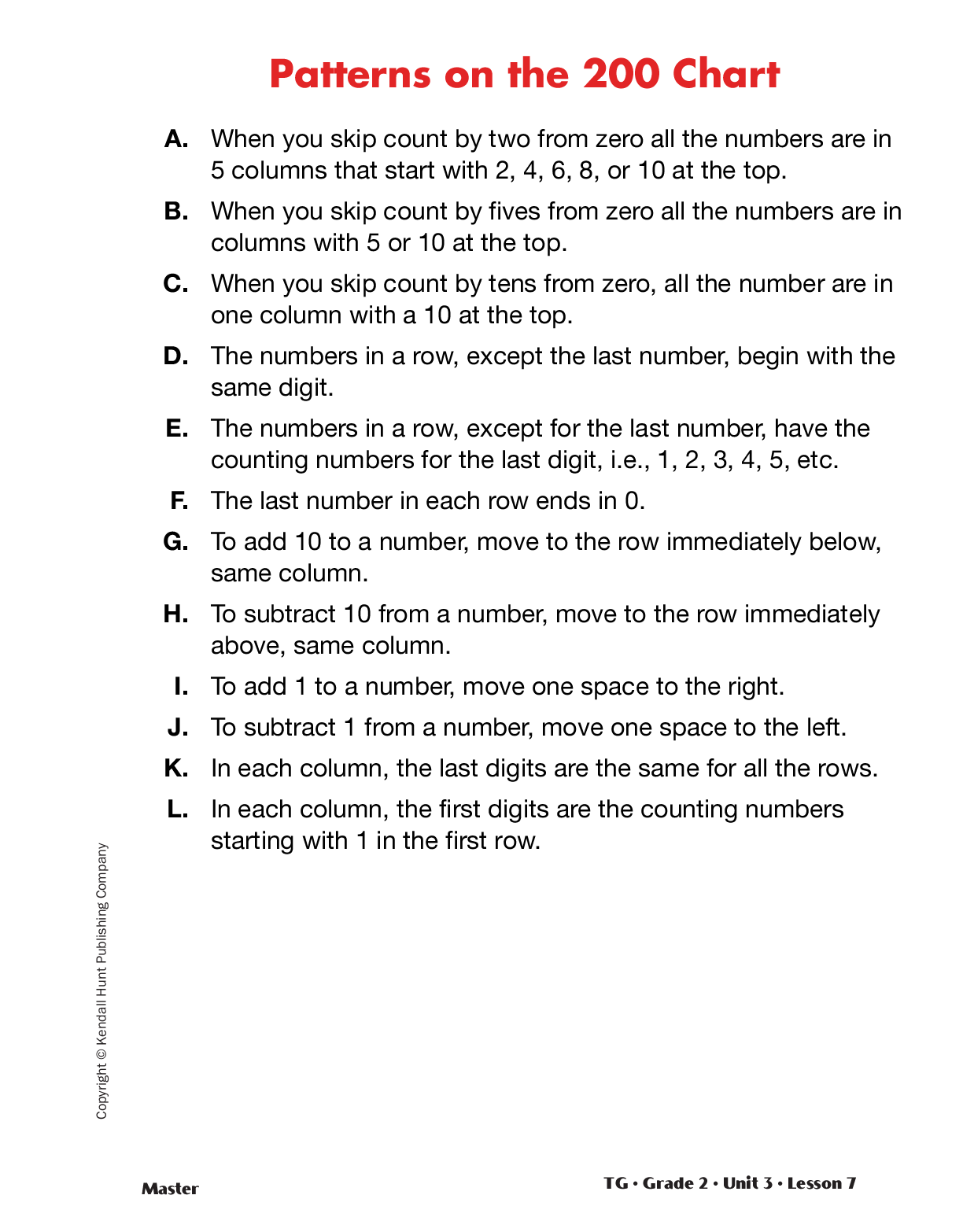Exploring the Number Line
Est. Class Sessions: 2Developing the Lesson
Part 1: Compare the 200 Chart and the Number Line
Draw students’ attention to the classroom number line.
Ask:
Show a display of the 200 Chart from the Student Activity Book Reference section and ask students to think back to the patterns they found on it.
After the class has discussed the patterns, display the Patterns on the 200 Chart Master. Read through the list, noting which patterns students mention and discussing others they may not have.
Begin a discussion of how to show the same patterns or moves on the number line.
Choose one particular pattern on the list, such as skip counting by twos, and ask:
Have a student demonstrate by drawing the hops on a display of the Number Lines 0–30 page from the Student Activity Book while another student shades the numbers for skip counting by twos on the 200 Chart.
Choose another one of the patterns you have listed and go through the same process. Choose a pattern other than skip counting so students see a different kind of pattern translated to the number line. Have a student show the pattern on the display of the Number Lines 0–30 page and another demonstrate on the 200 Chart.
Refer students to the Number Lines 0–30 page in the Student Activity Book and the 200 Chart in the Reference section. Assign two or three patterns or moves from the list to each student pair. The partners write the letters of their assigned patterns in the spaces provided on the Number Lines 0–30 pages. They discuss how to represent their assigned patterns or moves on a number line and mark each pattern on a separate number line. Circulate about the room as students are working to observe and answer questions.
Ask questions similar to the following:
When students have finished, have individual pairs report and demonstrate how their patterns translate to the number line. Use the display of the Number Lines 0–30 page and have students mark the patterns. Make sure that adding and subtracting are included in your discussion, particularly adding and subtracting 1, 5, and 10. See Sample Dialog 1 for a discussion of Pattern D. A student discusses how on both the 200 Chart and the number line, all the numbers in a row, except for the last number, begin with the same number. See Sample Dialog 2 for a discussion of Patterns G–J. Students discuss how to add and subtract on both the 200 Chart and on the number line.




















